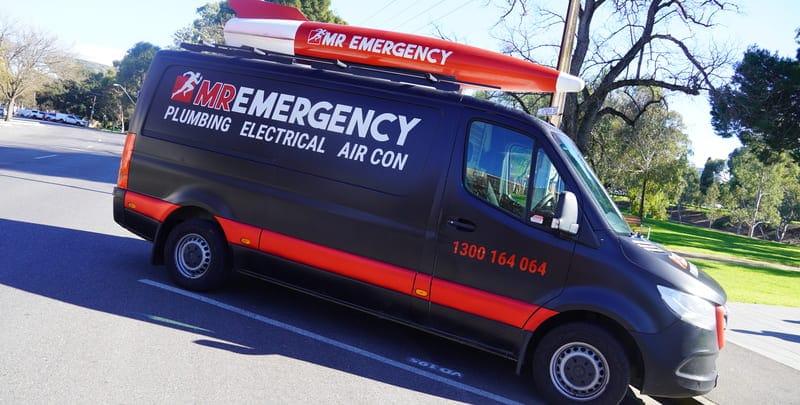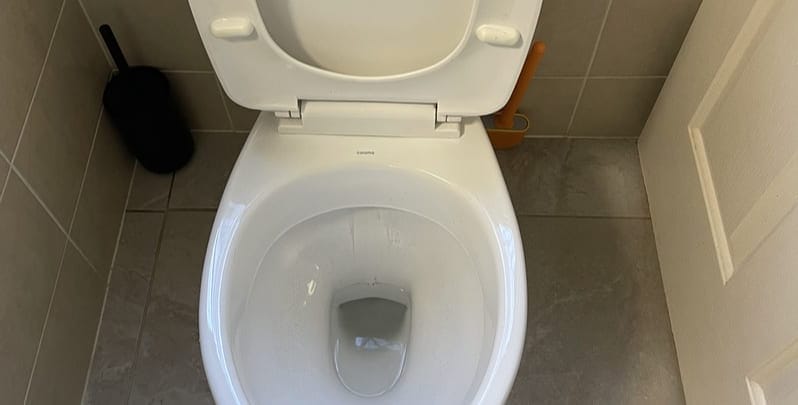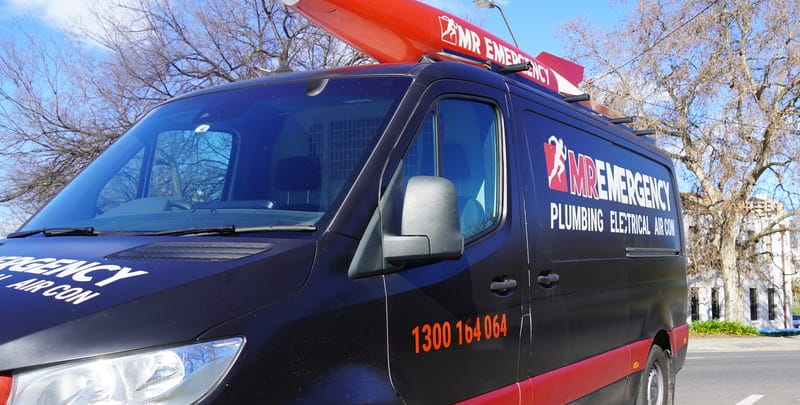How to Unblock a Toilet

A blocked toilet can quickly turn into a household nightmare, disrupting daily routines and causing frustration. Whether it's a minor blockage from excessive toilet paper use or a more stubborn clog, deep within the plumbing system, knowing how to unblock a toilet effectively can save you time, money, and unnecessary stress.
In this comprehensive guide, we’ll explore a variety of DIY methods to tackle toilet blockages head-on, from using a trusty toilet plunger to creating a homemade drain cleaner using common household items such as liquid dish soap or baking soda and vinegar. Or if necessary, calling in a professional for backup.
So, whether you’re faced with a badly clogged toilet or simply want to prevent future blockages, read on to discover practical solutions to keep your toilet bowl clear and your plumbing system flowing smoothly.
Identifying a Clogged Toilet
Blocked toilet drains can present in various ways, often disrupting the normal flow of household activities. Recognising the signs of a blocked toilet is essential to promptly address the issue and prevent further inconvenience. Here’s how to identify if yours is experiencing a blockage:
Water Level: Upon flushing, observe the water level in the toilet bowl. If the water rises higher than usual or fails to drain completely, it indicates a potential clogged drain.
Slow Drainage: Noticeably slow drainage after flushing is another indicator of a clogged toilet. If the water takes longer than usual to disappear from the bowl, there may be an obstruction in the toilet drain impeding the flow.
Gurgling Sounds: Pay attention to any gurgling or bubbling noises coming from the toilet bowl or drain. These sounds often signal trapped air within the plumbing system due to a blockage, disrupting the water flow.
Toilet Overflow: In severe cases of toilet blockages, an overflow may occur, causing water to spill over the rim of the toilet bowl onto the bathroom floor. This situation requires immediate attention to prevent water damage and sanitation issues.
Precautions Before You Begin
Before attempting to unclog a toilet, it’s essential to take certain precautions to ensure your safety and the effectiveness of your efforts. Here are some important steps to consider before you begin:
- Wear protective gear: Put on rubber gloves to protect your hands from coming into contact with waste material and potentially harmful chemicals.
- Ventilation: Ensure proper ventilation in the bathroom by opening windows or turning on an exhaust fan to avoid inhaling fumes from chemical drain cleaners.
- Clear the area: Remove any items from around the toilet that could obstruct your movements or get splashed during the unclogging process, such as paper towels or toilet brushes.
- Identify water source: Locate the toilet water supply valve and shut it off to prevent the toilet tank from refilling while you work.
By taking these precautions before you begin unclogging the toilet, you can minimise risks, protect yourself from potential hazards, and increase the likelihood of successfully clearing even the most stubborn blockages. If you’re unsure about how to proceed or encounter particularly challenging clogs, don’t hesitate to seek the assistance of a professional plumber for expert guidance and assistance.

Basic Techniques to Fix a Blocked Toilet
When faced with a blocked toilet, several basic techniques can help you effectively clear the obstruction and restore proper drainage. Here are some tried-and-tested methods using common household items, including ways to dislodge a clogged toilet without a plunger:
Plunging the Toilet
- Start by ensuring the toilet bowl has enough water to cover the plunger’s rubber cup.
- Place the plunger over the toilet drain, ensuring a tight seal.
- Push and pull the plunger vigorously, creating suction to dislodge the blockage.
- Repeat the plunging motion several times, gradually increasing pressure if necessary.
- If successful, the water should begin to drain freely, indicating the toilet clog has cleared.
Using a Toilet Auger or DIY Drain Snake
- Insert the toilet auger’s flexible cable into the toilet drain until you feel resistance.
- Rotate the handle clockwise while applying gentle pressure, feeding the cable further into the drain.
- Continue advancing the auger until you encounter the obstruction.
- Once the auger reaches the blockage, manoeuvre it back and forth to break up the clog.
- Slowly retract the auger, pulling the dislodged debris out of the drain.
Wire Coat Hanger Method
- Straighten a wire hanger and create a small hook at one end.
- Insert the hooked end into the toilet drain and manoeuvre it carefully to dislodge the blockage.
- Use a gentle, twisting motion to break apart the obstruction and pull it out of the drain.
- Be cautious not to scratch the toilet bowl or damage the plumbing while using this method.
Sometimes even simple measures such as pouring boiling water or a mixture of baking soda and vinegar down the drain can be effective in loosening and dislodging minor blockages in your toilet pipes. Approaches like these are always worth trying first.
By utilising these basic techniques, you can often clear even stubborn clogs without the need for professional assistance. However, if the blockage persists despite your efforts or if you encounter more severe issues such as a blocked drain beyond the toilet, it may be advisable to contact a plumber for further assistance.
Advanced Solutions for Stubborn Blockages
When basic techniques fail to clear a stubborn blockage in your toilet, it’s time to consider more advanced solutions to tackle the problem effectively. Here are some methods of unclogging toilets that can help you address even the most stubborn challenges:
Plumbing Snake
- Plumbing snakes, also known as drain snakes or toilet augers, are a long, flexible tool designed to reach deep into toilet drains and break up stubborn clogs.
- Insert the snake into the toilet drain until you feel resistance, then rotate the handle to manoeuvre the snake past the blockage.
- Continue feeding the snake into the drain, using a back-and-forth motion to break apart the obstruction.
- Once the snake has penetrated the clog, carefully retract it, pulling out any dislodged debris in the process.
- Ensure the hook at the end of the snake remains intact to effectively engage and remove the blockage.
Chemical Drain Cleaners
- Chemical-based cleaners can be effective in dissolving tough clogs caused by organic materials, grease, or soap scum.
- Follow the manufacturer’s instructions carefully when using chemical products, wearing rubber gloves and eye protection to avoid contact with the skin or eyes.
- Pour the recommended amount of drain cleaner into the toilet bowl and allow it to sit for the specified time to penetrate and break down the clog.
- Exercise caution when using chemical drain cleaners, as the chemical reaction can be harmful if misused or overused. Never flush away the chemical products with hot water as the potential chemical reaction could be hazardous.
Always consider chemical cleaners to be a last resort approach, at least before calling on a plumber. Ideally, you’ll be able to unclog a toilet without the use of chemicals due to the potential safety risks and the damage they can cause to the environment.
Professional Plumbing Services
- If DIY methods prove unsuccessful or if you encounter more severe plumbing issues, it may be necessary to seek the assistance of a professional plumber.
- A plumber has the expertise and specialised equipment to diagnose and address complex toilet blockages, ensuring thorough and long-lasting solutions.
- Professional plumbers can also inspect the plumbing system for underlying issues that may contribute to recurrent clogs, such as tree root infiltration or damaged sewer lines.
Preventing Future Toilet Clogs
Taking proactive measures to prevent future blockages can save you time and frustration in the long run. Here are some preventive steps you can take to keep your toilet flowing smoothly:
- Proper disposal of waste – Avoid flushing items such as baby wipes, paper towels, or feminine hygiene products down the toilet, as they can contribute to clogs. Stick to flushing only toilet paper and human waste to minimise the risk of blockages in the toilet drain.
- Regular maintenance – Perform regular maintenance on your toilet, including cleaning the toilet bowl and drain to prevent build-up of organic material and debris. Use a toilet brush to scrub the inside of the toilet bowl regularly, removing any accumulated residue that could contribute to clogs.
- Install a drain guard – Consider installing a drain guard or screen over the toilet drain to catch debris and prevent it from entering the plumbing system. This can help prevent larger items from causing blockages and reduce the need for frequent unclogging.
- Flush with hot water – Periodically flush your toilet with hot water to help dissolve any build-up of grease, soap scum, or organic material in the toilet drain. Simply pour a pot of very hot water into the toilet bowl and flush to clear away potential clog-causing debris.
By implementing these preventive measures, you can reduce the likelihood of future toilet clogs and maintain the proper functioning of your plumbing system. However, if you encounter persistent or severe clogs despite these efforts, it may be necessary to seek professional assistance to identify and address underlying issues with your toilet or plumbing system.

When to Call a Professional
While many toilet clogs can be effectively resolved using DIY methods, there are instances when it’s best to seek the expertise of a professional plumber. Here are some signs that indicate it’s time to call in a professional:
Recurrent clogs: If your toilet experiences frequent or recurrent clogs, despite your efforts to prevent them, it may be a sign of underlying plumbing problems such as tree root infiltration, damaged sewer lines, or improper venting.
Multiple clogged fixtures: If you notice that multiple plumbing fixtures in your home, such as the bathroom sink or bathtub, are experiencing slow drainage or blockages in conjunction with the toilet, it suggests a problem with the main drain line that requires professional diagnosis and repair.
Unusual symptoms: If you observe unusual symptoms such as gurgling sounds coming from drains, foul odours emanating from the toilet or drains, or water backing up into other fixtures when the toilet is flushed, it’s essential to contact a professional plumber promptly.
DIY methods fail: If you’ve attempted to use chemical drain cleaners, plungers, toilet augers, or other DIY methods to unclog your toilet without success, it’s time to admit defeat and call in the experts.
Safety concerns: If you encounter safety hazards during the unclogging process, such as exposure to toxic chemicals, risk of injury from sharp objects, or potential damage to plumbing fixtures, it’s best to leave the task to trained professionals who have the necessary skills and equipment to handle the job safely.
Do the Very Best for Your Toilet
Knowing how to tackle blocked toilets is essential for maintaining a smoothly functioning plumbing system. Whether you opt for DIY methods or enlist the help of a professional plumber, prompt action is key. Remember to use safety precautions and appropriate tools, such as a toilet snake or plunger, to effectively clear toilet clogs.
By incorporating preventive measures and addressing clogs promptly, you can keep your toilet clear and prevent future issues. With the right techniques and resources, even the most stubborn clogs can be cleared, ensuring your toilet remains free-flowing and efficient.
Please note: This information is provided for advice purposes only. Regulations differ from state to state, so please consult your local authorities or an industry professional before proceeding with any work. See our Terms & Conditions here.